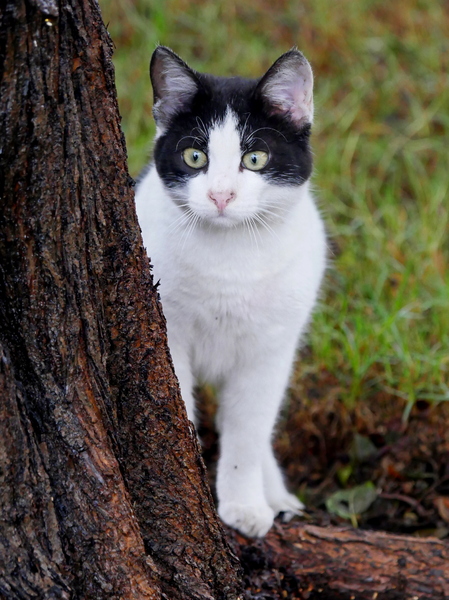Assessing the Cost-Effectiveness of Cat Litter Alternatives
Wiki Article

In recent years, the trend towards eco-conscious living has encompassed every aspect of our lives, including our beloved pets. As animal owners become progressively conscious of the environmental impact of their furry pals, the need for natural cat litter has surged. But exactly what is natural cat litter, and why should pet owners think about making the switch? In this thorough guide, we'll dive into the world of natural cat litter to explore its advantages, alternatives, and whatever else you require to know.
As environmental consciousness grows amongst family pet owners, the mission for sustainable cat litter alternatives has actually taken center phase. Conventional clay-based litters, while popular, present ecological concerns due to their non-biodegradable nature and the environmentally extensive procedure of clay extraction. This has actually resulted in a surge in interest for eco-friendly options that guarantee to be kinder to the planet without jeopardizing on efficiency. This short article delves into the world of cat litter options, highlighting their advantages, disadvantages, and what to consider when making the switch.
Clay-based feline litters, particularly those that are non-clumping, have been the go-to choice for decades due to their absorbency and smell control residential or commercial properties. However, their environmental footprint is worrying. The mining of sodium bentonite, a key part in clumping clay litter, is disruptive to communities. Moreover, these litters do not break down, adding to landfill waste. In addition, the dust from clay litters can be hazardous to both human and feline respiratory systems, triggering family pet owners to seek much healthier, more sustainable choices.
Biodegradable options are made from a variety of plant-based products, consisting of recycled paper, wood pellets, corn, wheat, and walnut shells. These materials not just break down naturally in the environment but likewise often originated from sustainable resources, reducing the environmental impact connected with their use.
Recycled Paper Litter is made from post-consumer paper waste, developed into pellets or granules. It's highly absorbent, essentially dust-free, and ideal for felines and owners with respiratory level of sensitivities. However, it might not manage odors as successfully as other materials and normally does not clump.
Wood Pellets, sourced from lumber scraps, provide a natural pine aroma that neutralizes smells without artificial fragrances. They're low in dust and soak up moisture well, becoming sawdust when wet. The sawdust can be sorted out, making the litter last longer, though some cats might not prefer the bigger pellet size.
Corn and Wheat Litter are understood for their clumping ability, comparable to clay litters, making clean-up cat litter alternatives simple. They're naturally degradable and compostable, with natural enzymes that assist control odors. Nevertheless, they can be pricier than conventional litter and might attract bugs if not kept effectively.
Walnut Shell Litter utilizes the natural absorbency of crushed walnut shells, using outstanding smell control and clumping homes. It's dust-free and environmentally friendly but can be more costly and might not be suitable for cats with nut allergies.
Silica gel litter, made from silica dioxide sand, oxygen, and water, is another alternative to clay. It's extremely absorbent, manages smells successfully, and is low dust. While not biodegradable, it's lighter and can last longer than clay litter, requiring less frequent changes. Nevertheless, its greater rate point and the texture, which some felines might find off-putting, are considerations for prospective users.
Cats can be specific about their litter. Slowly present the brand-new litter by blending Litter Box Mats it with the old, increasing the percentage of the brand-new litter over time to allow your cat to adjust.
Environmental Impact: Consider the lifecycle of the litter material, from production cat litter box to disposal, to ensure it aligns with your environmental values.
Health and Safety: Choose dust-free or low-dust options to protect both your and your cat's respiratory health. Ensure the litter is free from chemicals or fragrances that could damage your family pet.
Expense: While some options might be more pricey in advance, their durability and the amount required per change can make them affordable in the long run.
The Future of Cat Litter Alternatives
The trend towards sustainable pet care products is growing, with developments in cat litter options blazing a trail. Future advancements might include more efficient biodegradable products, enhanced smell control and clumping technologies, and even litter made from upcycled waste products. As consumer need for environment-friendly items increases, we can expect to see a broader series of options that do not compromise on benefit or efficiency.
The shift towards sustainable cat litter alternatives is not just a pattern but a reflection of a growing awareness of environmental concerns amongst pet owners. While traditional clay litters have actually controlled the market for years, the selection of eco-friendly and ingenious materials now readily available deals appealing choices for those wanting to lower their environmental footprint. By considering aspects such as ecological impact, health and safety, and cat approval, pet owners can make educated decisions that benefit both their furry buddies and the planet. As the market develops, the future of cat litter looks greener than ever, promising a great deal for cats, their owners, and the environment.